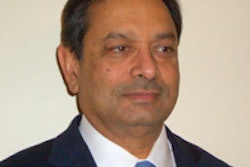
More than half of the 5.1 million children enrolled in Denti-Cal, California's Medicaid dental program, did not receive dental care last year, and some counties lack providers to meet patients' oral care needs, according to a new state audit.
The 92-page report blames poor provider participation and low reimbursement rates, some of which have not increased since 2000. Those rates were cut by 10% in 2013.
The program "needs to do a much better job in making sure enrolled children are getting the dental care they need," wrote the Children's Partnership, a nonprofit child advocacy organization that pushed for the audit, in an email to DrBicuspid.com.
California should do a better job assessing where there are gaps in access within regions and take steps to close those gaps, the group suggested, and should break down data on which children are not getting needed dental care.
For example, the group noted, "We know that young children, especially those under age 3, are not getting the dental care they need."
The California Dental Association (CDA) responded by urging an immediate reversal of the reimbursement cut. The rate reduction implemented applied to pediatric dental providers, while nondental pediatric providers were exempt from the cuts, the CDA noted.
"Dental disease is the number one chronic childhood disease and one of the top reasons children are absent from school," CDA President Walt Weber, DDS, said. "We need to ensure they can access the care they need to be healthy."
California's reimbursement rates for the 10 dental procedures most frequently authorized for payment averaged $21.60 -- only 35% of the U.S. average, according to the report.
The state has one of the lowest Medicaid reimbursement rates in the nation for dental services, the Children's Partnership noted.
"If the state does not pay providers a reasonable rate that, at a minimum, covers the cost of providing the care that children need, there will not be enough providers to meet the current and growing demand for care," the group wrote. "The state should conduct a study to identify an actuarially sound reimbursement rate for dental providers, take steps to reimburse providers at that rate, and make sure that action is making an impact on children's access to dental care," the organization suggested.
Research has shown that raising reimbursement rates is a necessary step but doesn't solve the access problem, noted Shelly Gehshan, who directs children's dental policy for the Pew Charitable Trusts.
"States -- and their managed care vendors -- have an obligation to ensure access for MediCal recipients that they clearly can't meet with these low rates," Gehshan noted in an email to DrBicuspid.com.
The dental industry is changing, she noted, with private practices chasing a shrinking pool of patients who have dental insurance or can pay for care.
"The future will be much kinder to dental practices that find ways to lower the per unit cost of care and reach out to people who are now left out," Gehshan wrote.
Many counties have few, if any, Denti-Cal providers
Although the state appears to have a sufficient number of dentists in the Denti-Cal program, access to them varies significantly by geography, with rural counties having few providers.
Five counties with at least 2,000 children in the program may not have any dental providers, and in 11 counties, none of the providers was willing to accept new Denti-Cal patients in 2013, the audit found. There were not enough dentists who were willing to accept new patients in 16 counties.
California regulations require that Denti-Cal beneficiaries live or work within 30 minutes or 15 miles of a dental provider.
However, the state agency that runs Denti-Cal and Medi-Cal programs, the Department of Health Care Services (DHCS), responded in an email to DrBicuspid.com: "The Medi-Cal provider network currently includes dentists throughout the state who are actively accepting new patients. However, we recognize the importance of increasing our provider network to meet the needs of our growing Medi-Cal population."
Problem exacerbated by increased eligibility for Denti-Cal
The review comes amid new federal and state laws that increase the number of Californians eligible for additional dental services covered by Denti-Cal. The report noted that the number of child and adult enrollees using dental services could grow from 2.7 million to 6.4 million people.
“Recent changes in federal and state laws make us question whether California will have enough available dental providers to meet the needs of Medi-Cal beneficiaries.”
"Although the statewide active provider-to-beneficiary ... appears sufficient to provide reasonable access to dental services for child beneficiaries, recent changes in federal and state laws that increase the number of children and adults who can receive additional covered dental services make us question whether California will have enough available dental providers to meet the needs of Medi-Cal beneficiaries," the report stated.
California was the "12th worst among the states" for the low number of children who received dental care in 2013, the report noted, citing data from the Centers for Medicare and Medicaid Services.
The report also criticized DHCS for failing "to adequately monitor the program" and comply with state law that requires it to review the reimbursement rates annually to ensure that Medi-Cal recipients have reasonable access to services.
DHCS agreed to all of the report's recommendations except establishing provider-to-beneficiary ratios, claiming it's not required by state law.
"DHCS is committed to ensuring that our Medi-Cal beneficiaries have appropriate access to high-quality care," the agency responded in an email to DrBicuspid.com.
California should make it easier for children to get dental care by sending providers to schools, the Children's Partnership said.
"It is also critical to bring dental care to where children are -- in schools, Head Start sites, and other community settings," the group noted. "Many families don't have affordable transportation, and many low-income parents lose pay when they miss work. Through innovative programs, such as the Virtual Dental Home, children get the care they need without missing school, and their parents don't have to miss work."
One solution, the group said, is encouraging more dentists to team up with dental hygienists who can go into the community. "By expanding the team, dentists can see more children enrolled in Medi-Cal and even save some money," the organization noted.
California should also find ways to train and make dentists more comfortable treating young children, the group suggested.
The report also chided the department for not enforcing terms with Delta Dental of California, the private company the state contracts with to provide services, which require that Delta Dental ensure that at least mobile services were available in underserved areas. Delta Dental, California's largest dental insurer, will be paid $8.6 billion to administer the Denti-Cal program from 2004 until June 2015, according to the report.
DHCS noted that less than 10% of the costs of the program is spent on administrative functions, and more than 90% is spent on Medi-Cal beneficiaries.
Delta Dental officials declined to comment.
Recommendations
The report recommended a series of changes for improvement, including reviewing reimbursement rates annually as required, enforcing contract provisions to increase utilization of dental services, and providing data for federal and state reporting requirements.
California should foster development of delivery systems such as the Virtual Dental Home (VDH) that can expand care for Denti-Cal recipients, suggested Gehshan from the Pew Charitable Trusts.
"The Virtual Dental Home model can work with a variety of provider types, such as dental therapists or dental hygienists with extra training, in community settings where dentists are scarce," she said.
Midlevel providers are already providing access for underserved children in Minnesota, Gehshan noted.
"Dental therapists, who command half or less of the salary of the typical dentist, are lowering the unit costs of delivering routine care," she said.
A private practice that Pew studied in Minnesota was able to increase its Medicaid patient load by 50% -- more than 200 patients -- and still make a profit, Gehshan pointed out.
"This was accomplished with a Medicaid reimbursement rate that's similar to the one in California," she said.
The VDH program could help bridge the access gap, the Children's Partnership agreed.
"Allowing dental hygienists and some dental assistants to have an expanded scope of practice -- allowing them to decide which dental x-rays to take before a dentist sees the patient and to place interim therapeutic restorations, as directed by a supervising dentist -- more children (up to 70%) are able to stay in their community setting for dental care," the group said.
The VDH expands access to care by addressing families' barriers to care, while allowing dental providers to work at the top of their license and expertise, the group added.
DHCS said it is moving forward with a plan to allow "certain other allied dental professionals to bill for Medi-Cal dental services within the scope of their practice," and is also developing a plan to allow for dental services to be provided via teledentistry.
In a final swipe at the program, the report noted that more than $70,000 had been authorized for dental services for dead people.



















